Milos is the island with the most and perhaps the best beaches in Cyclades.
ilos island is in the Southwestern part of Cycladic islands very close to Kimolos and Folegandros and south of Sifnos. It is the fifth largest island of the Cyclades. The surface area of Milos is 151 square kilometers and the length of its coast line is 126 kilometers. It has been created by the lava of the volcano and it is a jewel with lacy coasts and magnificent colors. More than 70 heavenly beaches are waiting for you to visit them.
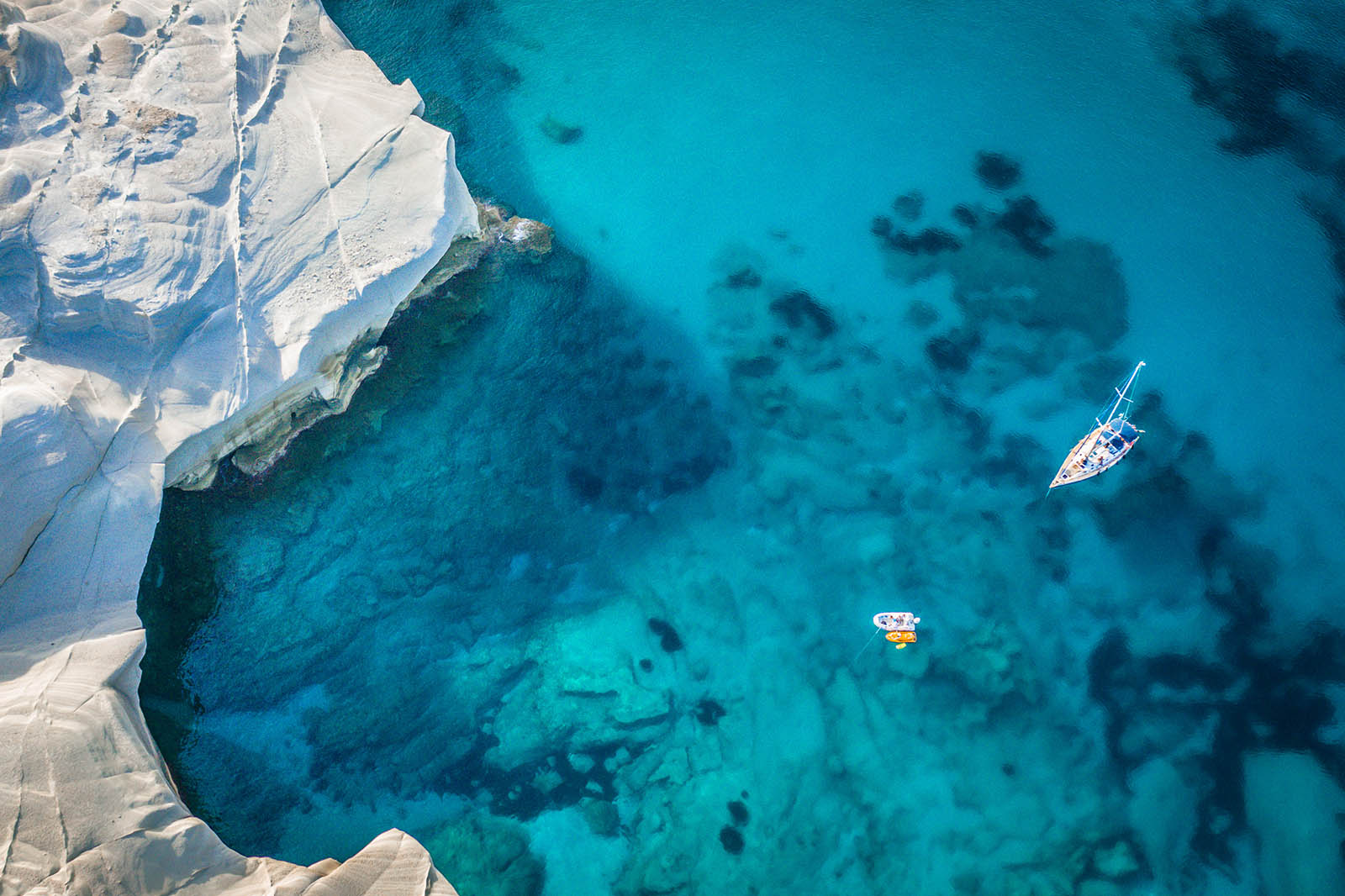
Milos is the island with the most and perhaps the best beaches in Cyclades. Most of the island’s beaches are sandy or with white washed rocks like in Sarakiniko beach one of the most emblematic spots on the island, carved from the blue green sea waters. The villages and the settlements of the island are particularly picturesque with white houses, cobbled streets and small churches, all with view to the endless blue.
In Plaka with the cobbled streets and the Cycladic architecture you will enjoy one of the most beautiful and romantic sunsets of the Aegean. Trypiti with its traditional windmills and Pollonia, a known resort, add their own personal touch on the island. Of course, the heart of tourism beats in Adamas the big natural port of Milos.
Besides the unique beaches that will charm you, you will also find valuable sightseeings of unique importance which show the rich history and the culture of the island. The catacombs of Milos, equal in significance with those of Rome will amaze you. Moreover, the Ancient Theatre where the famous statue of Aphrodite of Milos was found but also the natural sightseeings (mines, caves, Glaronisia) all are waiting for you to see them.
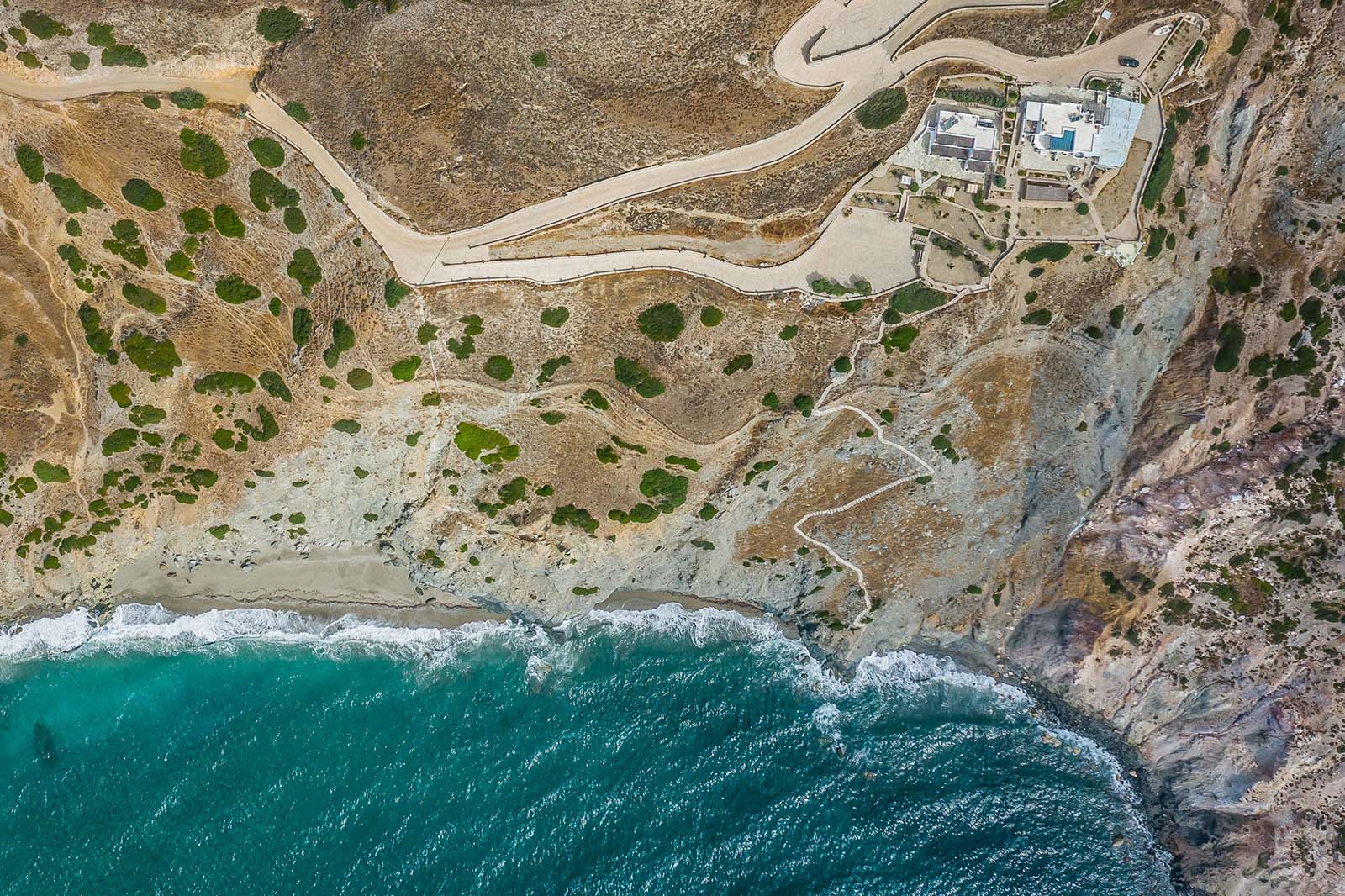
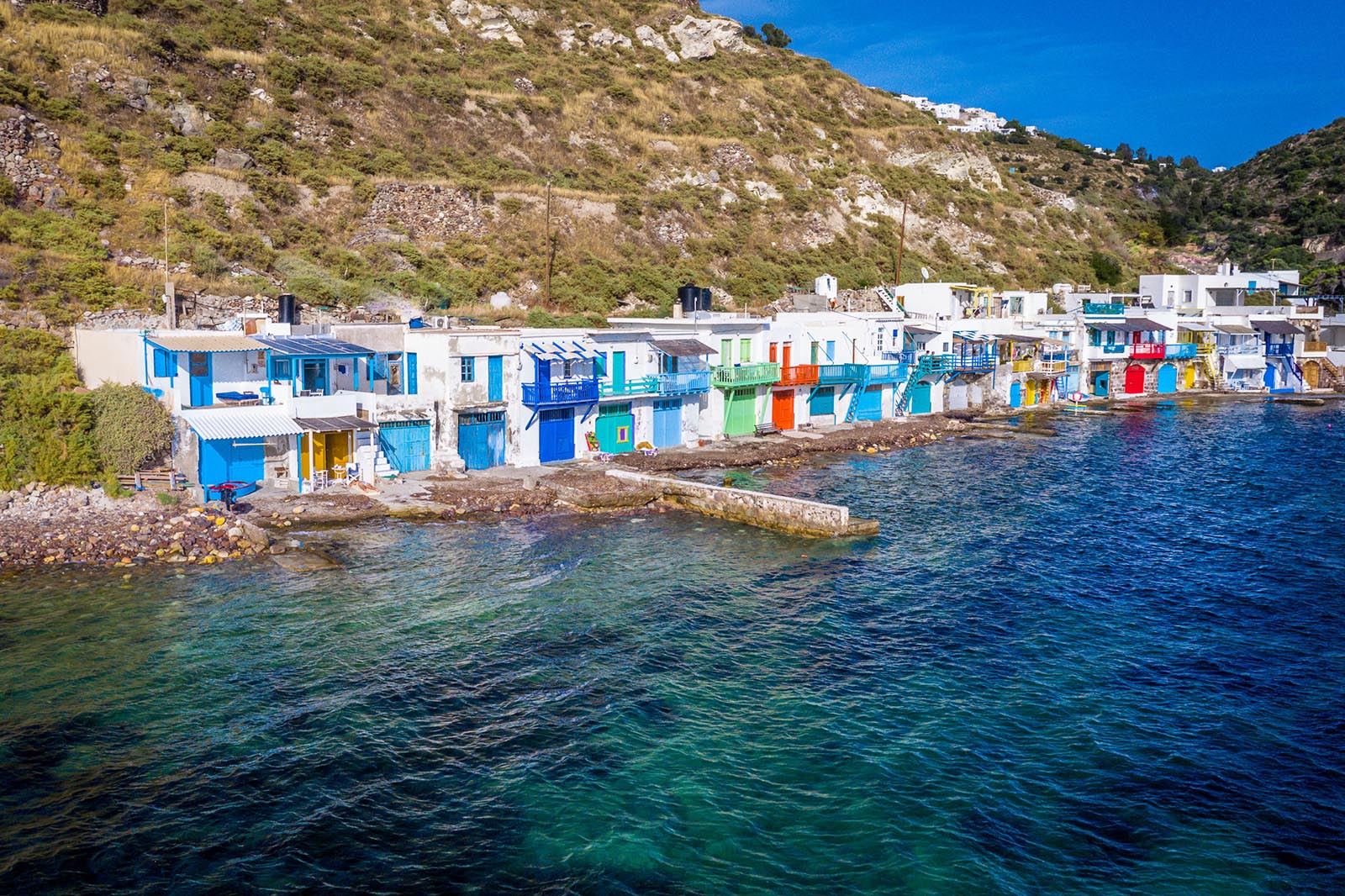
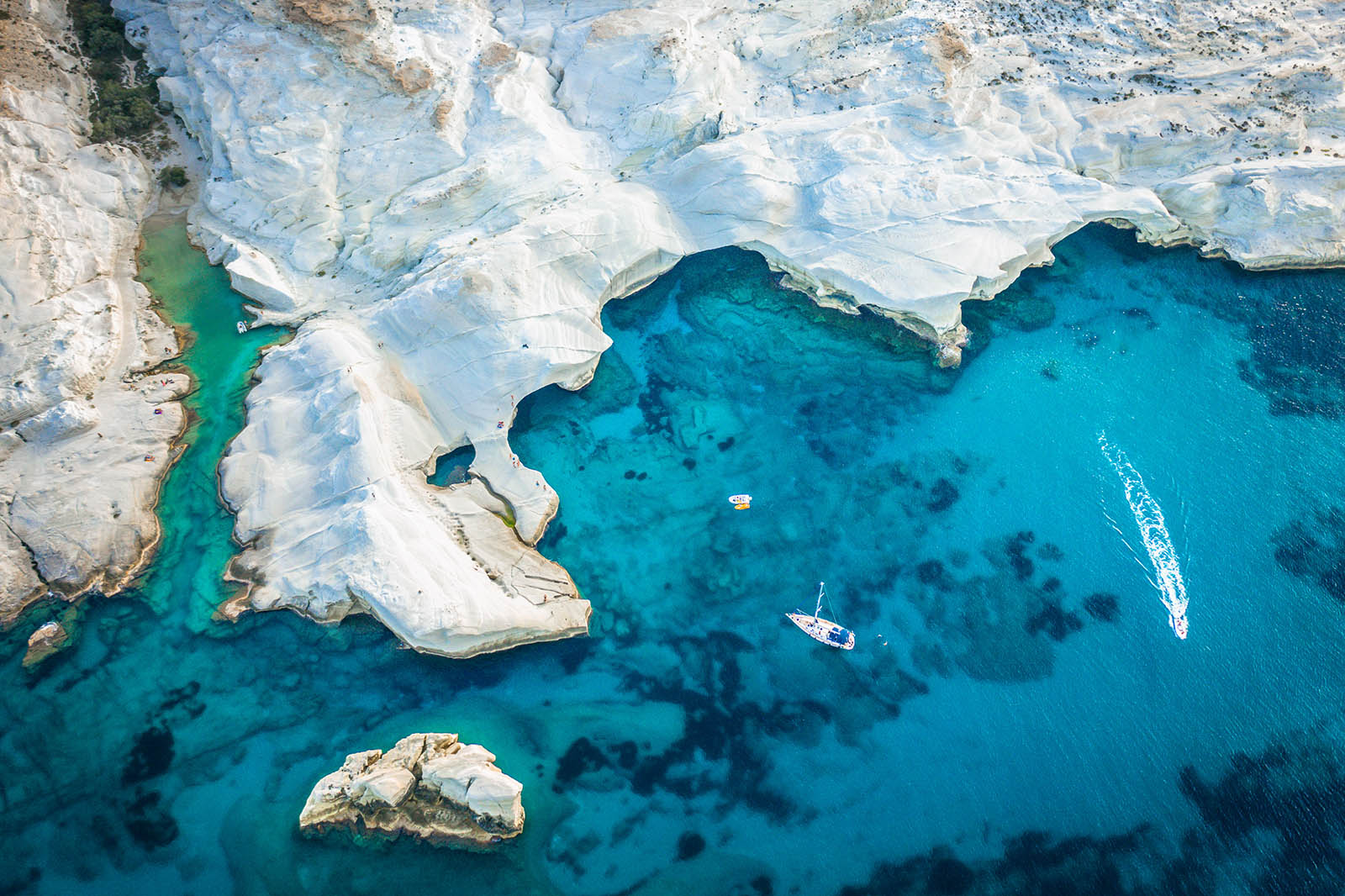
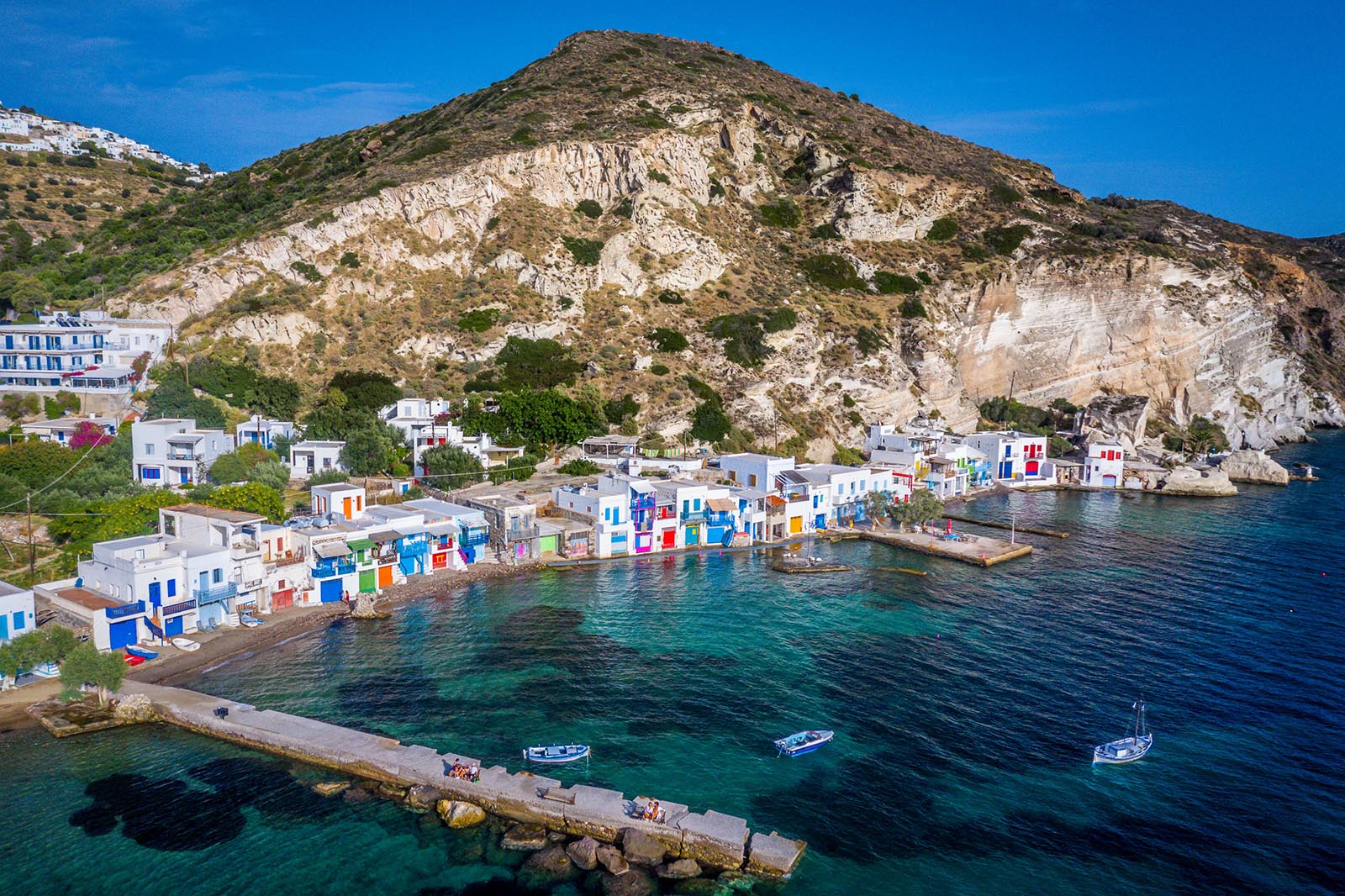
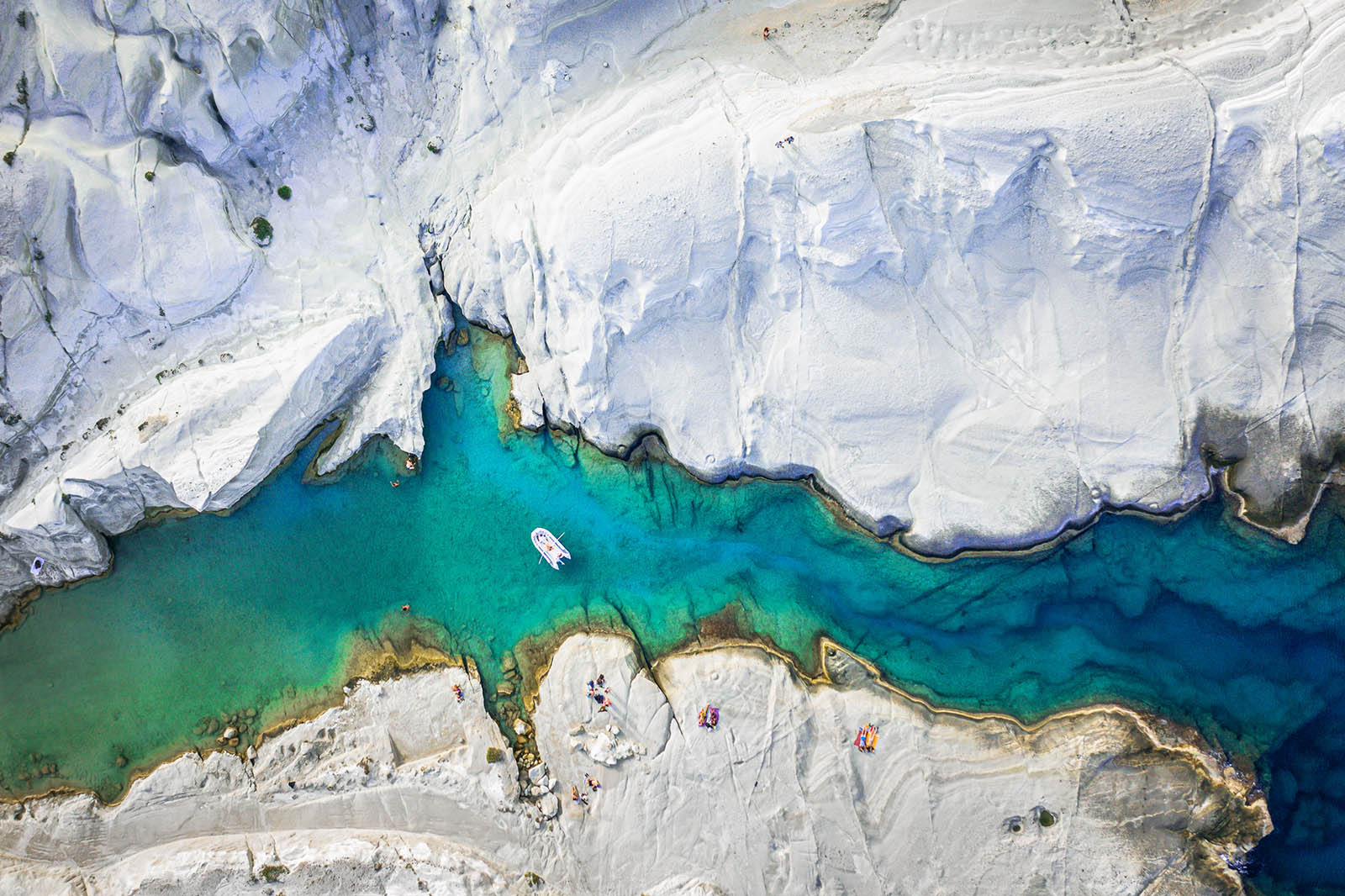
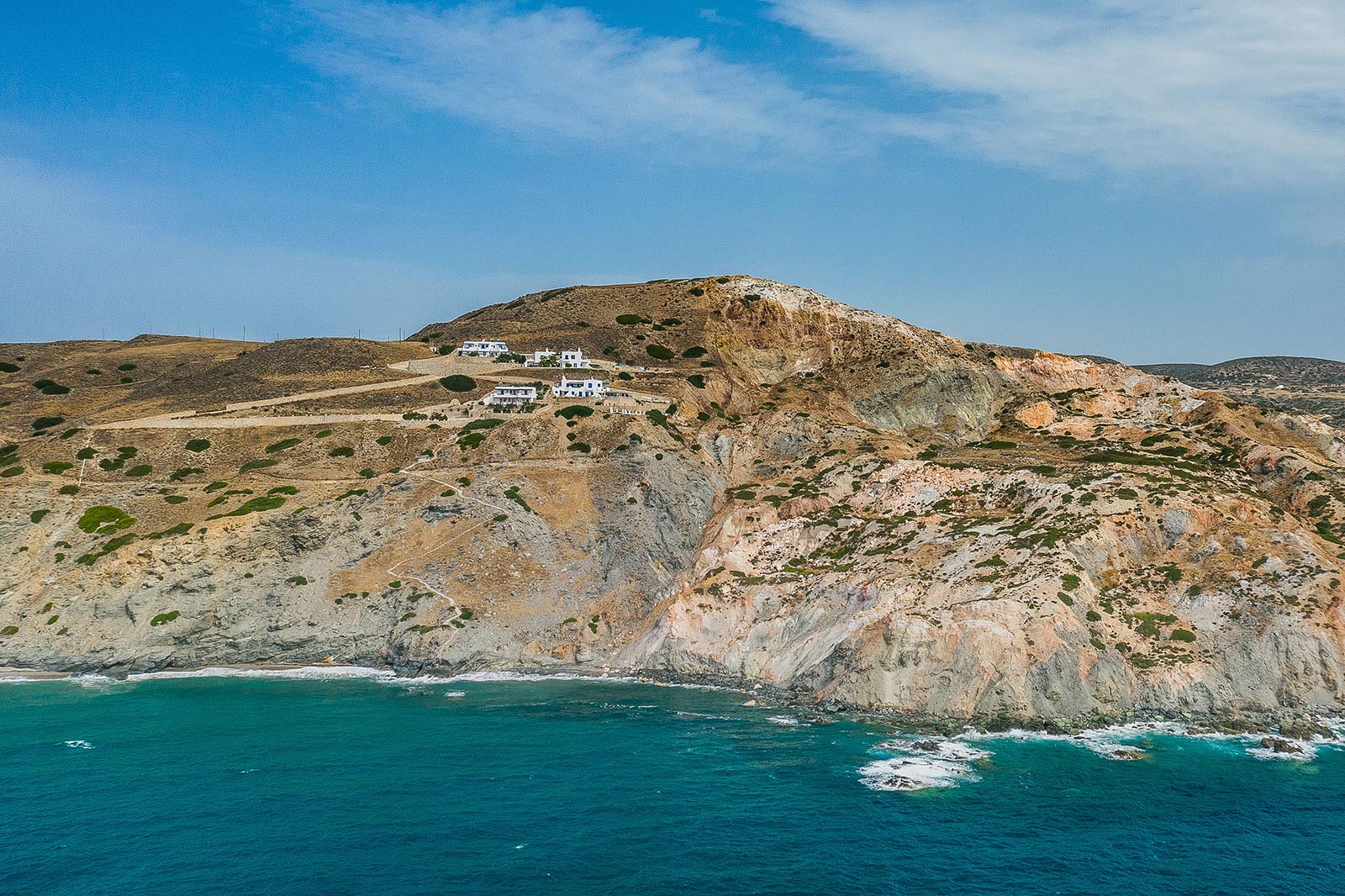
From the inscriptions that are until today known it seems as if Milos was named like this from the ancient times. Few authors mentioned Milos with names such as Vivlis, Mimallis, Zefyria, Akitos and Vilos. Others said that Milos was a Phoenician Colony and others that Milos, a descendant of Kinyras the King of Cyprus, was the first settler.
Milos was from the very old times under the influence of the Minoan and even the Mycenaean Civilization, according to the findings of the prehistoric city of Fylakopi.
Fylakopi is considered as the first city of Milos. Apart from it, prehistoric settlements were found in other places too.
Since the Neolithic Age (New Stone Age) the trade of Milos was developed significantly with exportations of the known rock that is called Volcanic Glass in all over the Mediterranean area. Knifes, blades, chisels, spear edges and arrows were constructed in the very old times and before the discovery of metals, from this black stone that looks quite similar to a glass.
Tools from volcanic glass of Milos were found in prehistoric facilities in Peloponese and this proved that Milos as well as the mainland Greece were in contact through the sea some 7,000 years ago B.C. This is the most ancient evidence in the maritime history of the world. In the common battles of Ancient Greeks, Milos was present. In the sea battle of Salamina the island had sent two penteconter ships. Moreover, 480 soldiers from Milos participated in the battle of Platea.
However, in the Greek campaign against Persians, the people of Milos didn’t give presence as they joined Spartans with who they were related as being both Dorieis. This incident was the reason that Athenians turned against them twice (426-415 B.C.) and conquered Milos. After the fall of Athens as many of them survived, returned back to their mother land.
Then Milos flourished again and kept this prosperity until the Macedonian Era and even in the Hellenistic Era as the important findings of those times witness, such as the Statue of Poseidon (supernatural size, Athens Museum) and in particular the statue of Aphrodite of Milos that today is at Louvre Museum. The island was also flourished even during the Roman occupation from which is the marble theatre in the ancient city.
During that time the catacombs were also created, which are the evidence of the first spread of Christian teaching on the island.
Milos was one of the first islands of the Cyclades that participated in the Greek Revolution of 1821 against Turks. From 1824 Cretan refugees from Sfakia area came and settled in the area where today the village of Adamas is.
During the World War I, the port of Milos had been utilized as the naval station of the British and French fleet in the Aegean.
During the World War II, Milos was conquered by Germans in May 1941 and was liberated in May 1945.
Milos island is in the Southwestern part of Cycladic islands and is 86 nautical miles far from Piraeus and 105 nautical miles from Crete.
The island is daily connected by boat from Piraeus and Western Cyclades (Kythnos, Serifos, Sifnos, Kimolos). Daily schedules from Crete and the Dodecanese as well as with the most islands of Cyclades (Syros, Tinos, Andros, Santorini, Paros, Folegandros, Sikinos, Ios, Anafi e.t.c).
It is also connected by air from El. Venizelos (Athens International Airport) and Thessaloniki (Makedonia) Airport.
Finally, the port of Milos is considered to be one of the best & largest natural ports of the Mediterranean and provides access to yachts.
• The magnificent sunset in Plaka
• The catacombs and the Ancient Theatre
• The Mining Museum
• Tour of Milos by boat
• The small houses with the big wooden colored doors (Syrmata) in Klima and Mandrakia settlements
• Plaka with its cobbles streets and the Cycladic Architecture
Milos Sub-perfect +30 22870 21100
Milos Municipality +30 22870 21249
Tourist Police +30 22870 21378
Port Authorities +30 22870 23360
Airport +30 22870 22380
Olympic Airways Office +30 22870 22380
Greek Organization of Telecommunications in Milos +30 22870 21599
Milos Post Office +30 22870 21214
Milos Health Centre +30 22870 22701
Custom +30 22870 22282
Adamanta Community Clinic +30 22870 21755




